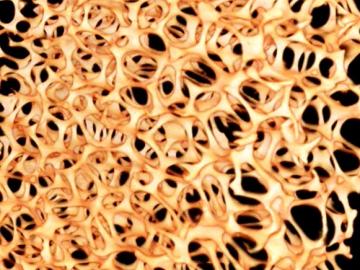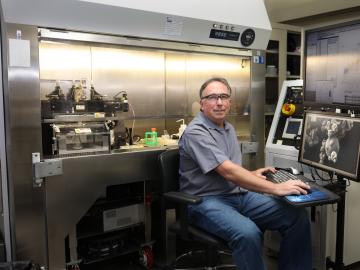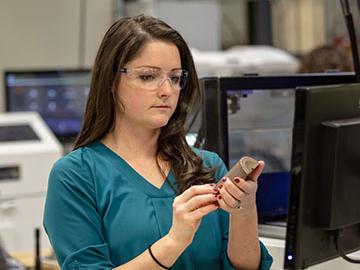Filter News
Area of Research
- Advanced Manufacturing (6)
- Biology and Environment (1)
- Building Technologies (1)
- Clean Energy (37)
- Climate and Environmental Systems (1)
- Computational Engineering (1)
- Computer Science (7)
- Fusion Energy (6)
- Materials (32)
- National Security (4)
- Neutron Science (16)
- Nuclear Science and Technology (8)
- Quantum information Science (3)
- Supercomputing (19)
- Transportation Systems (1)
News Type
Date
News Topics
- 3-D Printing/Advanced Manufacturing (10)
- Advanced Reactors (6)
- Artificial Intelligence (8)
- Big Data (5)
- Bioenergy (5)
- Biomedical (3)
- Clean Water (3)
- Composites (2)
- Computer Science (23)
- Cybersecurity (5)
- Energy Storage (5)
- Environment (10)
- Exascale Computing (1)
- Frontier (2)
- Fusion (5)
- Grid (4)
- Isotopes (1)
- Machine Learning (4)
- Materials Science (16)
- Microscopy (3)
- Molten Salt (1)
- Nanotechnology (4)
- Neutron Science (14)
- Nuclear Energy (10)
- Physics (4)
- Polymers (1)
- Quantum Science (8)
- Security (2)
- Space Exploration (3)
- Summit (5)
- Sustainable Energy (7)
- Transportation (9)
Media Contacts

ORNL and The University of Toledo have entered into a memorandum of understanding for collaborative research.

Researchers at Oak Ridge National Laboratory demonstrated that metal foam enhances the evaporation process in thermal conversion systems and enables the development of compact HVAC&R units.

Researchers at Oak Ridge National Laboratory will present eight innovative technologies currently available for commercialization during a public event at ORNL on October 17.

In a recent study, researchers at Oak Ridge National Laboratory performed experiments in a prototype fusion reactor materials testing facility to develop a method that uses microwaves to raise the plasma’s temperature closer to the extreme values

Researchers used neutron scattering at Oak Ridge National Laboratory’s Spallation Neutron Source and High Flux Isotope Reactor to better understand how certain cells in human tissue bond together.

Using the Titan supercomputer and the Spallation Neutron Source at the Department of Energy’s Oak Ridge National Laboratory, scientists have created the most accurate 3D model yet of an intrinsically disordered protein, revealing the ensemble of its atomic-level structures.

Scientists at the U.S. Department of Energy’s Oak Ridge National Laboratory have demonstrated a way to isolate and grow targeted bacteria using genomic data, making strides toward resolving the grand challenge of uncultivated microbial “dark matter” in which the vast majority of microorganisms remain unstudied in the laboratory.

Processes like manufacturing aircraft parts, analyzing data from doctors’ notes and identifying national security threats may seem unrelated, but at the U.S. Department of Energy’s Oak Ridge National Laboratory, artificial intelligence is improving all of these tasks.

The National Alliance for Water Innovation, a partnership of the Department of Energy’s Oak Ridge National Laboratory, other national labs, university and private sector partners, has been awarded a five-year, $100 million Energy-Water Desalination Hub by DOE to address water security issues in the United States.

Amy Elliott, an engineer and researcher studying additive manufacturing at the Department of Energy’s Oak Ridge National Laboratory, has been selected as one of 125 AAAS (American Association for the Advancement of Science) IF/THEN Ambassadors.




